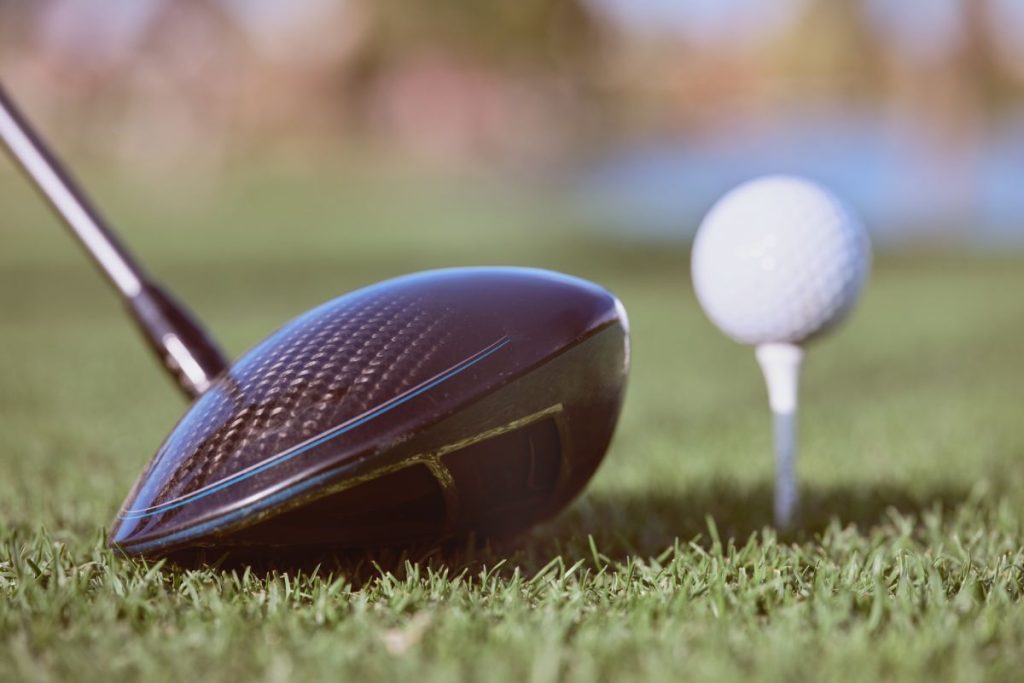Golf is far more than a good walk spoiled. It is excellent exercise, can be enjoyed in some of the most beautiful places in the world, and, unlike so many other sports, it can be played by pretty much anybody. People can golf at really any age, and in mixed groups. It is not the age or sex of the golfer that matters, but rather their skill set. And the clubs they use.
The right driver can add an impressive distance to your swing. But just what makes a good driver, and how can you avoid buying a bad one? Read on to find out…
What is a golf driver?
A golf driver is a type of golf club, usually the longest club in your bag. It is also arguably the most important club in your arsenal. Known also as the 1-wood, it has the biggest head of any of your clubs, and is the first one that you will use when you set foot on a green. The driver is used to hit the ball as far as possible, teeing off with a big swing to try and get as far down the green as you can.
A driver is often made of lightweight materials such as titanium or carbon fibre, specially designed to maximise the distance your ball will travel. These essential clubs are made to swing as fast as possible, creating more speed and a greater total distance that your ball can go.

There are several key components that make your driver such a special club. They work together to create the arc of your swing, give you the greatest distance, and the most accuracy. Finding the mix of these components that best suits you will give you the best swing, and help improve your game. The right kind of clubface or driver shaft can make all the difference.
You use a golf driver to start each hole, hitting the ball off the tee with this club. The aim is to hit the ball long distance to get closer to the hole, or in an ideal world, all the way there. You can choose between certain types of drivers, including low-spin drivers, forgiving drivers, and draw-biased drivers.
Low-spin drivers are ideal for reaching optimal distances, forgiving drivers help improve the accuracy of your shot, and draw-biased drivers help you straighten up your shot. Each has huge benefits, and may be used by different golfers in different circumstances.
How do I choose a new driver?
Historically, all golf clubs were made of wood, and the differences between them were not so pronounced. Now, each club is massively different from the others in your bag, and there is also an impressive variety within each category. One driver will not be the same as the next, and working out these differences and what works for you is the key to finding the right driver.
The head, the shaft, and the grip are the 3 main parts of a club, and with premium golf drivers, you should select the components that most suit you as a golfer and the way you play your game. If you want to cover the most distance across the beautiful landscape of the hole, achieve the greatest accuracy, or cut down your spin, a different club might be best suited to each.
When choosing a new driver, you should consider what makes a good driver, and which of these components are the most important to you. Don’t just go for the biggest head, the longest shaft, or the most expensive option. Choose one that fits your hand and your swing, that will improve your game, and that you can use to the best advantage.

What makes a good driver?
A good golf driver will have the right blend of characteristics to improve your swing and gain you the distance and accuracy that you want. Some of the main qualities that make your golf driver great are:
- Loft – the degree of loft that your driver possesses can massively change the distance you can get, but also how difficult it is to hit the ball with. A loft of 10-12 degrees is popular for beginners, while you may choose a different loft given your expertise.
- Forgiveness – the forgiveness your club has can give you greater consistency as a golfer. The greater the forgiveness, the better, and yet once you gain more skill, you will need less forgiveness to reach your sweet spot of distance and control.
- Weight and durability – lighter weight drivers tend to be better, though you also want your club to be strong and durable.
- Optimal head size – a larger head size can make it easier to hit the ball.
- Optimal shaft length – longer here is not always better, it depends on your height and reach, though a longer shaft can produce a longer swing.
- Spin control – less spin means more distance, so a good driver will cut your spin and give you a longer shot.
- Price – the best drivers don’t have to be the most expensive. You can often find excellent premium drivers that suit your game without breaking the bank.

What makes a bad driver?
The most important factor that can make a driver ‘bad’ for a golfer is a poor fit. The optimal club for one golfer will not be the same for another. One may be taller, requiring a longer shaft length than someone else. You may prefer a club with greater forgiveness, or one that gives you the longest possible distance.
You should consult an expert if you are unsure of the best qualities in a driver for you, to help you find the perfect club. In general, however, factors that make a bad driver include:
- A lack of forgiveness – if you have a tendency to hit off-centre, or even if it only happens occasionally, an unforgiving driver will penalise you every time.
- Excessive spin – too much spin can reduce your distance and control.
- Poor adjustability – a lack of adjustability can prevent you from fine-tuning your swing and reaching your full potential with your driver.
- An unpleasant sound or feel – if your driver produces an unpleasant sound it can be jarring, causing mishits and mistakes, as well as making the game less enjoyable. Similarly, if your club doesn’t feel right in your hands, it is not the right fit for you.
Final thoughts
Finding the right driver for you isn’t always a matter of buying the most expensive brand or type. Take the time to work out what you want from your driver, and choose the premium driver to give you the best shot possible off the tee.











